First ever passive house in Georgia nearly complete with construction

CHAMBLEE, Ga. (Atlanta News First) — Construction crews in Chamblee are building a home that could save homeowners money and help the environment. The first passive house in Georgia will be complete next week, paving the way towards building green homes throughout the southeast. Julie Crooks is an interior designer with Home and Made Custom […]
Group of architects create region’s largest 3D-printed building in just 140 hours

A large European structure, dubbed by its creators as the Wave House, took just 140 hours to build, thanks to 3D printing technology.
It’s the result of a collaboration of several firms and tech experts to build a unique, stylish cloud-computing data center in Heidelberg, Germany, the largest 3D-printed structure on the continent, according to a story by New Atlas.
In addition to a design that lives up to its ocean-themed name, the build is also another success story for the unique construction concept.
The printer, which looks like a scaffolding rig that moves across the top of the build site, lets loose a recyclable “cement-like mixture” in layers. The slurry comes out at 43 square feet per hour, forming the outside walls. The process releases “significantly less” air pollution than traditional methods, all per New Atlas.
The unique facility, at 600 square meters (about 6458 square feet), was designed by SSV and Mense Korte, printed by Peri 3D Construction for KrausGruppe, the developer.
“A challenge … in the Heidelberg project was solved by the architects … by giving the walls a wave design, a design feature that also gave name to the building: the Wave House. Such wave designed walls could not have been realized using conventional construction methods, so instead 3D construction printing technology was used due to the design freedom of this construction method,” said a press release about the project, quoted by New Atlas.
#cool_newsletter_f68c1387-cccd-4982-8bf7-77f2fc5e1d7e .cool_newsletter__inner span{color:#000000}
Join our newsletter
Good news, green hacks, and the latest cool clean tech — straight to your inbox every week!
A time-lapse video highlights the impressive size and maneuvering capability of the printer, showing it traveling back and forth over the structure, adding a layer of material with each pass.
[embedded content]
The result is a building that looks fit for a Hollywood movie set, with vertical ridges, cylindrical elements, and wave-like designs. A human crew finished the roof, doors, wiring, and some other parts of the build.
Standard materials used to construct buildings generate about 9% of global air pollution. What’s more, “raw resource use” is forecast to double by 2060. Steel, concrete, and cement are among the building elements noted in a United Nations report on the sector’s impact on planet overheating.
Other concepts being developed to clean up some of the pollution from the construction sector include a cement alternative made from fungus, called mycocrete. And in the United States, 3D-printed communities are growing, utilizing the efficiency of the tech.
The innovations are important in more ways than one. By reducing planet-warming air pollution, we can improve sustainability for our food system, as climate-worsened storms, droughts, and other weather patterns are impacting the agriculture sector, including food prices.
Unique 3D-printed buildings like the Wave House could become a more standard part of efforts to quickly and sustainably construct buildings. For typically utilitarian structures like data centers, the result can even be a bit artistic.
“The trend toward making data centers more in the vicinity of the users and therefore locate them in suburban areas and cities has created a need to make the data centers more visually appealing,” New Atlas reported, quoting the press release on the project.
Join our free newsletter for weekly updates on the coolest innovations improving our lives and saving our planet.
The Rise of 3D-Printed Prefabricated Homes
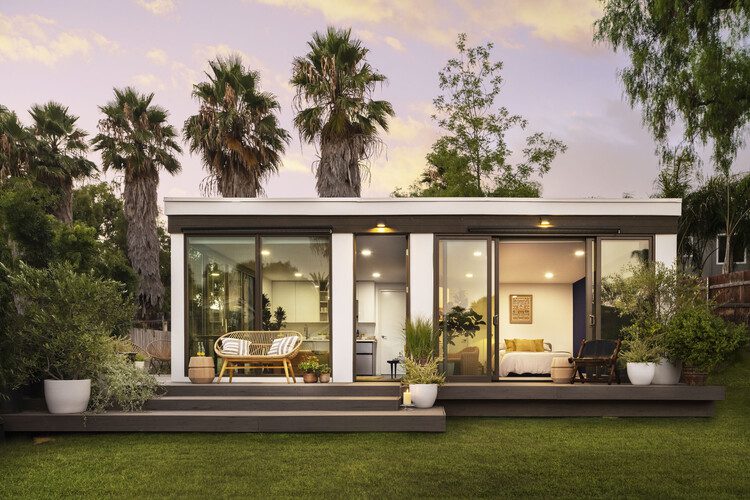
ADU / Mighty Buildings. Image © Paul VuShareShareFacebookTwitterMailPinterestWhatsappOrhttps://www.archdaily.com/1015506/the-rise-of-3d-printed-prefabricated-homesClipboard”COPY”CopyAs construction materials costs increase, builders and developers are seeking alternatives to traditional home construction methods to address housing shortages. In response, an expanding construction technology field is the 3D printing sector. This technology promises quicker, cheaper construction and the potential to extrude local and recycled materials. However, due to the slow-changing nature of the construction industry, a radical shift involving large-scale 3D-printing machines on-site and a complete overhaul of the construction process seems unlikely shortly. Prefabricated 3D printing modular housing offers a compelling solution, providing the benefits of 3D printing advancements while leveraging standard construction machinery and labor. In off-site 3D-printed construction, there is no need to transport massive 3D-printing machines on-site. Instead, components are printed in a controlled environment and then assembled on-site. These types of 3D-printed residential modular kits of parts are already being manufactured and are attracting significant investment.
3D printing company creates earthquake-resistant home built in 26 hours — here’s how it could revolutionize construction
COBOD, a 3D printing company based in Denmark, has created Guatemala’s first 3D-printed building — and even better, the prototype house is designed to be earthquake-resistant.The appeal of 3D-printing houses is simple: It can be done more quickly and with less human labor than any other construction method. As detailed by New Atlas, cement company Progreso partnered with COBOD to make the project happen. The Guatemala house, a one-floor, 527-square-foot dwelling, was completed in just 26 hours, divided over seven days.Cement company Progreso partnered with COBOD to make the project happen.COBOD’s BOD2 printer was able to follow a pre-planned blueprint to extrude layers of a cement-like mixture to form the house’s shell. From there, human builders installed windows, wiring, plumbing, and the house’s traditional Guatemalan roof made from palm thatching.The earthquake-resistant elements of the house’s design appear to be the curved walls and flexible, lightweight roof. COBOD explained that the curved walls in particular would have been very difficult to achieve without 3D printing (much less in just 26 hours).”Due to the use of 3D printing, the house features highly organic-shaped walls that would otherwise be extremely expensive, even unfeasible to complete with concrete blocks, the region’s predominant building material,” the company said in a press release published by New Atlas.Watch now: Alex Honnold test drives his new RivianThe ability to quickly and easily build houses that can withstand extreme weather could make a big difference in many people’s lives, as such events are becoming increasingly common due to changing weather patterns driven by the overheating of our planet.As of right now, COBOD is treating the Guatemala house as a simple prototype with no plans to create more, but that could change in the future.”The COBOD rep told us that the project was created as a research tool and there’s no immediate plans to create it on a larger scale,” New Atlas reported.COBOD is also responsible for a 3D-printed post office in India and Europe’s first 3D-printed two-story house, according to the outlet.Quickly erecting buildings isn’t the only way that people have been using 3D printing to help the planet, either. Other companies are using 3D printing to repurpose used coffee grounds into household items, create artificial limbs, create animal teeth to deter poachers, and even build structures for space exploration.Join our free newsletter for weekly updates on the coolest innovations improving our lives and saving our planet.
Are 3D Printed Data Centres a Viable Sustainable Solution?
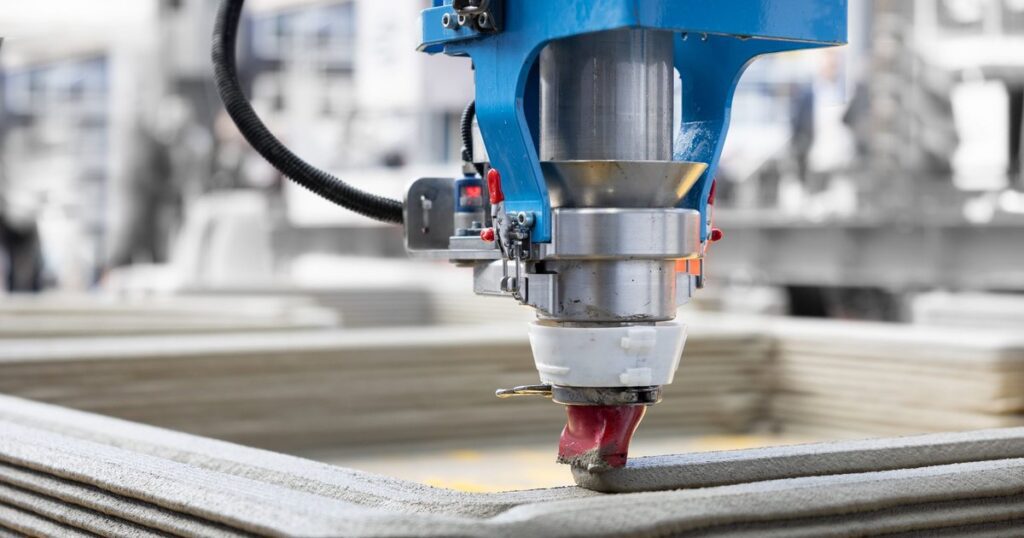
Speaking on the project’s completion, COBOD highlighted a growing trend towards making data centres more in the vicinity of the users and to therefore locate them in suburban areas and cities. As a result, data centre developers are starting to focus on the need to make data centres more visually appealing.Additionally, it was a cost-saver, with Hans-Jörg Kraus, Managing Partner of KRAUS GRUPPE Heidelberg, commenting on the amount saved via 3D construction printing.
“I cannot tell you what it would cost if we had made the data centre conventionally,” he said. “3D construction printing made this project economically viable”.
In addition to saving time and cost, constructing 3D printed data centres could also lead to more customised solutions being created to suit a wide range of functions and situations. This is ideal for a data centre facility, given that supply and demand is swelling rapidly around the world on account of technologies such as artificial intelligence (AI).
3D printed construction has also been hailed as energy efficient, as it means that developers are using fewer resources and creating less waste. Enhanced sustainability solutions can result in greater economic success for businesses, which could be particularly useful when considering the amount of power and energy data centres currently use.
This type of construction could result in data centres being able to experiment more with the appearance and contents of their site and creating more opportunities for innovation.
Associated challenges: Does this plan have a design flaw?
Despite such forward-thinking progress, 3D printed data centres could result in some challenges, including job cuts, design inaccuracies and even a lack of reinforcement if not considered correctly.
As 3D printed buildings enter further into public consciousness, and even city centres, debates could arise over the strength of these structures and how much they can contain.
Speaking in a LinkedIn post, General Manager Cloud at Cyberlink AG, Maximilian Wellenhofer, comments on how data centres would need to incorporate reinforcement techniques to address these potential issues.
“These challenges notwithstanding, the project in Heidelberg – and the broader push towards 3D-printed structures – opens up a dialogue about the future of construction in high-risk areas, including those prone to earthquakes,” he highlights. “The industry must address structural integrity and resilience against natural disasters, ensuring these innovative structures can withstand such events without compromising safety or functionality.”
He adds: “This approach not only highlights the potential for more efficient building methods but also prompts a significant question: can the architectural design of 3D-printed structures be optimised for natural cooling processes to reduce power consumption for cooling?”
******
Make sure you check out the latest edition of Data Centre Magazine and also sign up to our global conference series – Tech & AI LIVE 2024
******
Data Centre Magazine is a BizClik brand
Canada to allocate $600 million for new construction tech including 3D printing
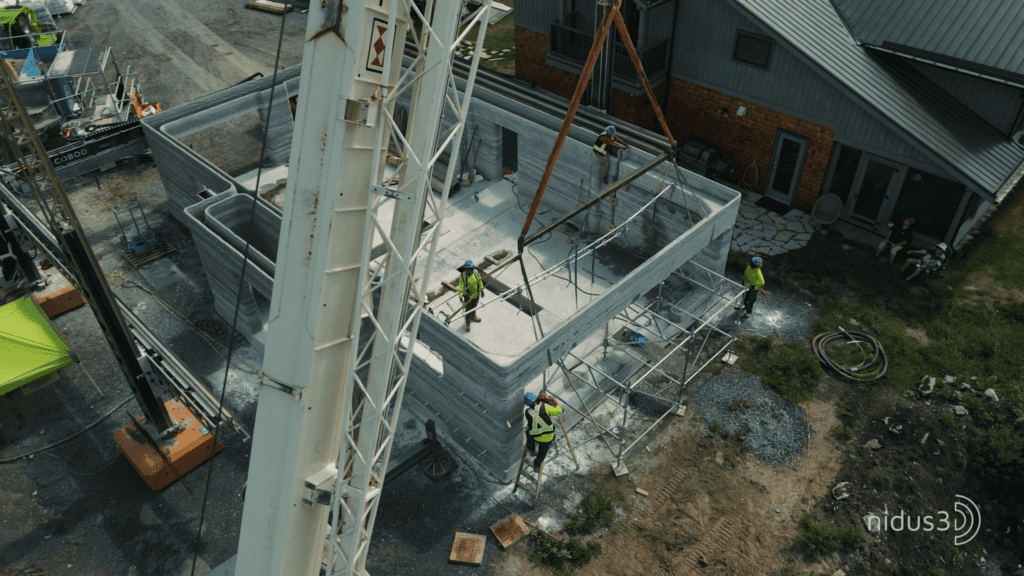
Stay up to date with everything that is happening in the wonderful world of AM via our LinkedIn community.
In countries and areas like the US, Canada, China, Russia, the Middle East or Africa, the enormous availability of land often clashes with insufficient housing. New technologies such as 3D printing can help build houses better, cheaper, more sustainably and faster. For this reason, Canadian Prime Minister Justin Trudeau has announced an over $600 million package that will research and develop new ideas and technology like prefabricated housing factories, mass timber production, penalization, 3D printing, and pre-approved home design catalogs.
“We’re changing the way we build homes in Canada,” the Rt. Hon. Justin Trudeau, Prime Minister of Canada, said in a statement. “In Budget 2024, we’re supporting a new construction approach, with a focus on innovation and technology. This will make it easier and more cost-effective to build more homes, faster. You should be able to live in the community you love, at a price you can afford.”
A 2-story building built by Canadian 3D construction printing company nidus 3D using a COBOD 3D printer.
In Canada, housing is one of the biggest pressures on people. Young Canadians are renting more than ever and being priced out of their communities. Families are finding it difficult to get a good place to settle down. Seniors are being forced to downsize. The cost to build homes is too high, and the time it takes to finish projects is too long. We’ve already taken bold action to build more homes, faster, improve access to housing, and make homes more affordable – and we know there is more to be done.
Trudeau, who is known to be very much aware of the latest technological and scientific development, said the Country needs to build more homes and needs to do so like never before, at prices Canadians can afford. That means investing in ideas and technology like prefabricated housing factories, mass timber production, penalization, 3D printing, and pre-approved home design catalogs.
The upcoming Budget 2024 introduces several measures aimed at addressing housing challenges. Among other things, it entails the establishment of a new $50 million Homebuilding Technology and Innovation Fund, to leverage an additional $150 million from private sector entities and other levels of government. This fund will facilitate the expansion, commercialization, and adoption of innovative housing technologies and materials, particularly for modular and prefabricated homes. Next Generation Manufacturing Canada will lead this initiative.
Built by Twente Additive Manufacturing (TAM), the Fibonacci house was the first 3D printed house in Canada. It was built in 2020 and is listed on Airbnb.
The budget also allocates another $50 million to streamline and modernize home-building processes through regional development agencies. This funding builds upon the progress of numerous ongoing innovative projects nationwide, including endeavors focused on modular housing, mass timber construction, robotics, 3D printing, and automation.
A significant $500 million is earmarked to bolster rental housing, offering low-cost financing via the Apartment Construction Loan Program. This support will aid new rental housing projects employing innovative construction methods, including those by prefabricated and modular housing manufacturers, alongside other homebuilders.
Additionally, a modernized Housing Design Catalogue is slated for launch to standardize up to 50 efficient, cost-effective, and livable home blueprints. With an $11.6 million allocation from Budget 2024, this catalog will encompass templates for modular homes, row housing, and fourplexes, intended to simplify and expedite housing approvals and construction timelines for housing manufacturers, provinces, territories, and municipalities.
These measures are designed to bolster made-in-Canada ideas and technologies while fostering growth in the home-building sector. They leverage innovation to facilitate the necessary scale and pace of construction to alleviate housing shortages. However, they are considered as initial steps toward more comprehensive solutions. The government plans to further engage with stakeholders from the housing, construction, and building materials sectors, as well as labor unions, experts, and other partners, to formulate a comprehensive Canadian industrial policy for homebuilding, aimed at ensuring fairness for future generations.
Trudeau pushes 3D-printed homes to solve Canada housing crisis

Canada’s Prime Minister Justin Trudeau announced measures aimed at making it easier and cheaper to build new homes, with an emphasis on prefabricated modular housing.The federal government will provide C$50 million (US$36.8 million) to a new fund meant to “support the scale-up, commercialisation and adoption of innovative housing technologies and materials,” Trudeau’s office said in a news release.A further C$50 million will go through regional development agencies to help modernise homebuilding “through modular housing, mass timber construction, robotics, 3D printing and automation”, the release said.Trudeau also announced C$11.6 million to support the creation of a catalogue of preapproved home designs to reduce the cost and time it takes to build housing – a strategy first used during World War II.The unhoused find shelter in makeshift tent encampments at Clarence Square park in Toronto, Ontario, Canada, in February. Photo: BloombergEarlier this week, Trudeau announced a top-up to a C$55 billion fund to provide low-cost financing for apartment building construction.On Friday he said C$500 million of that would be used for new rental housing “using innovative construction techniques from prefabricated and modular housing manufacturers”.The prime minister and his cabinet have made a series of announcements this week on housing measures that will be in the April 16 budget.Trudeau has been under fire over the past year due to Canada’s soaring cost of housing and is trailing badly in the polls to Conservative Party Leader Pierre Poilievre.Colleges face millions in losses amid Canada’s foreign student crackdownMelissa Lantsman, deputy leader of the Conservatives, described Trudeau’s pre-budget announcements as “frantic” and accused him of re-branding and recycling policies that do not get homes built.She said her party’s plan to provide a bonus to cities that increase homebuilding by 15 per cent annually – and fine those that do not – would be more effective.While Trudeau has pushed provinces and cities to allow up to four units on every lot, Lantsman said her party would allow communities to decide which types of housing work for them.“We just want to see more approvals and less gatekeepers in the way,” she said.
D.R. Horton Invests in 3D Printing Robot Manufacturer Apis Cor
.cms-textAlign-left{text-align:left;}.cms-textAlign-center{text-align:center;}.cms-textAlign-right{text-align:right;}
Apis Cor
Apis Cor’s 3D-printed concrete walls for a residential house in Melbourne, Florida.
D.R. Horton, the largest company on the 2023 BUILDER 100 list, has invested in Apis Cor, a manufacturer of construction 3D-printing robotic technologies. “Access to D.R. Horton’s extensive expertise and infrastructure can boost the adoption and scalability of our breakthrough technology in the market and help us make our technology available for every home building in the country sooner,” says Apis Cor CEO and co-founder Anna Cheniuntai. The two companies said they will work together on a multi-unit construction projection in South Florida after the finalization of the new 3D-printed wall system, which Apis Cor estimates will result in “a significant increase in productivity.”Apis Cor, one of the 25 finalists for the 2024 Ivory Prize for Housing Affordability, was founded in 2016 to address the labor shortages in the housing industry that impact home building’s ability to meet the growing demand for housing. While 3D printing provides the freedom to create different shapes and patterns, Cheniuntai says Apis Cor did not set out to “reinvent” the wall with its technology and printing process. “We decided to make our walls [as] similar as possible to what is already being built in the industry. We tested our material in a third-party lab, [and] we tested the wall samples in independent labs,” Cheniuntai says. “We provided this data to home builders saying we build the same houses that have been built for hundreds of years. We have figured how to get the houses permitted for our specific technology, and all the houses we have printed are fully permitted.”To date, the company has produced buildings that range from The Dubai Municipality in the United Arab Emirates—what is touted as the largest 3D-printed structure in the world—to a fully permitted, 2,200-square-foot single-family model home in Melbourne, Florida. The company’s 3D-printing technology aims to empower builders with advanced robotic solutions to help fill the gap in the limited pool of skilled labor, increase productivity, and build more houses. “As of now, we are focused on single-family housing in the United States. That is where we aim to have the biggest impact,” Cheniuntai tells BUILDER. “Our mission is to empower everyone with our technology so they can increase productivity [and] so home builders can build more homes. If you have more houses and supply and demand start meeting each other, that will eventually drive the costs down.”As part of the relationship with D.R. Horton, the home builder will provide advisory support to Apis Cor through its team of construction experts. “As a strategic investor, we are always interested in highly innovative companies. We’ve seen many technologies in the space and are very impressed with what Apis Cor has achieved and demonstrated so far with their mobile, proprietary printer ‘Frank,’” says Brad Conlon, senior vice president of business development for D.R. Horton. “We look forward to what we can achieve together to expedite the commercialization of this promising technology.”3D printing is a tool that can be utilized to help create more inventory and achieve greater affordability, according to Cheniuntai.“The 3D-printing solution just by itself is not the [sole] solution to the affordable housing problem. We believe it’s an important piece of the puzzle to help home builders build more houses,” Cheniuntai says. “The more predictable the [building] process is, the more cost-effective builders can build and the faster they can build. We believe addressing the most labor-intensive part of construction—the wall structure, the shell of a house—will help [builders] get all subcontractors committed to the schedule so the house is built within the schedule that was originally planned.” Keep the conversation going—sign up to our newsletter for exclusive content and updates. Sign up for free.
This low-energy housing solution could revolutionise building standards in Australia

The Passivhaus concept is an approach to designing sustainable structures by using engineering to work with, not against, the natural environment. The Canadian city of Regina was built on treeless prairie at a latitude of 50 degrees north. Temperatures in January fall to an average of minus 20°C, but summer brings its own challenges: the […]
An Introduction to the Benefits of Passive House Design – Innovation & Tech Today

Photo Courtesy of Forge Craft Architecture and Design Very few things in our world today are done the same way they were a hundred years ago – or even 50 years ago. Our phones have gotten smarter and our TVs have gotten thinner, yet when it comes to our homes, the basic structure and building […]
Portugal’s first 3D printed house

Could 3D printing be the future for housing? Today we’re taking a look at what will be the first Portuguese house “built” using a 3D printer in Portela da Villa, in Torres Vedras. It will be built by Litehaus.The company that links cutting-edge technology to the real estate sector aims to “bring a sustainable and innovative solution to the [construction] industry, which is responsible for 42% of carbon emissions”. The process of creating this residential unit was carried out using technologies such as Artificial Intelligence, in an initial phase of creativity and projection, and 3D printing already in its building.In a statement, Litehaus explains that it wants to focus on the production of modular buildings and 3D-printed houses, which consume 67 per cent less energy to manufacture. The aim, it says, is to build 100 houses a year in Portugal.”We’re here to make the sector wary. This technology allows us to produce up to 45m2 of walls in just 20 hours,” says Simi Launay, Litehaus’ Chief Creative Officer.”Litehaus is embarking on a mission to redefine living spaces, fusing AI technology, 3D printing and modular homes to create buildings that echo simplicity, innovation and sustainability. Our goal is to build 70% faster and 20% cheaper, building homes that epitomise elegance and minimalism harmonised with Portugal’s natural beauty,” he adds.
onebulb architecture’s passive brick house in india winds communal and meditative spaces
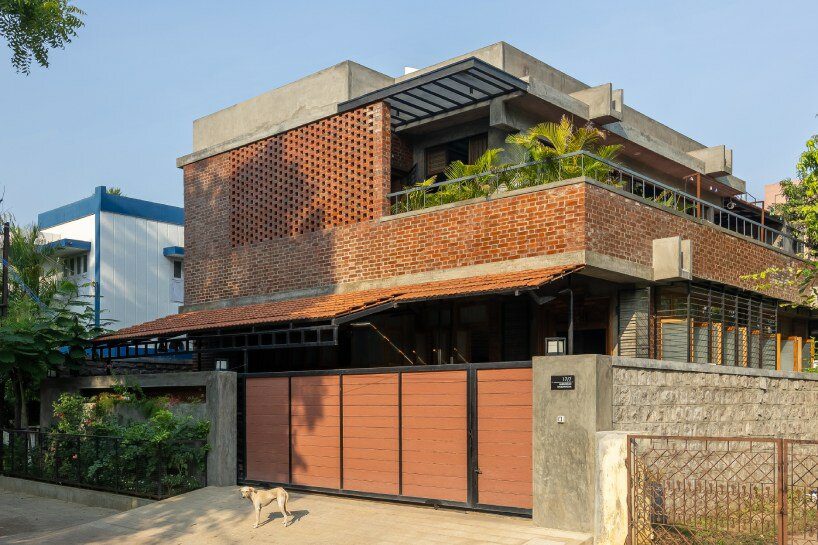
natural materials and passive techniques shape brick veedu Set in the residential urban fabric of Madurai, India, the Brick Veedu exudes a subtle yet bold character, balancing traditional motifs with modern, metallic, and minimal elements. Onebulb Architecture gives life to the client’s requirements by realizing an abode composed of various open volumes visually interconnected with […]
The big bill to cool new Auckland townhouses
One owner’s bedroom had a temperature of 30degC at 9pm. Photo: Supplied The owners of some new build townhouses in Auckland say their homes cost twice as much to cool over summer as they do to heat in winter. The million dollar homes have just one heat pump installed on the second storey of the […]
ICON announces new technologies, such as AI platform

ICON, the 3D printing company behind tentative lunar habitats and the world’s largest 3D-printed community, announced an abundance of new initiatives and technological advances at SXSW in Austin, Texas. From a new robotic construction system capable of erecting multistory structures, a low-carbon concrete, and an artificial intelligence platform, it’s fair to say that for ICON the future of the built environment lies in untapped and yet-to-be realized technologies.
“When we launched the company and the first permitted 3D-printed house in 2018 during SXSW, we set out to both decrease the cost and increase the quality of building instead of choosing one or the other,” Jason Ballard, ICON cofounder and CEO, said at this week’s SXSW event. “We didn’t want to just be the best at 3D printing, we wanted to be the best at building, period.”
Phoenix at work on-site in Austin where a 3D-printed performance venue is underway (Roger Ho)
Since its 2018 debut ICON has made an indelible stamp on the built environment. It has always billed its portfolio of 3D-printed buildings as affordable and efficient. A new digital catalog registers the myriad residential project types ICON has the means to work on.
The Passive House Network Publishes Guidance for 2024

The Passive House Network has published a new resource that clarifies the expectations and roles of the certifier in certifying buildings to Passive House building standards. The “Building Certifier Scope of Services” helps outline a range of services a certifier might provide in the process of certifying a building to Passive House standards. For builders, […]
One of France’s First Passive Houses Is on the Market for €895K

Location: Bessancourt, France Price: €895,000 (approximately $971,656 USD) Architect: Karawitz Architecture Year Built: 2009 Footprint: 1,722 square feet (three bedrooms) Lot Size: 0.15 acres From the Agent: “Built in 2009 by Karawitz Architecture, this contemporary house is a positive energy bioclimatic achievement, whose high environmental quality was recognized by the visit of the Minister of […]
ICON Unveils New Technology
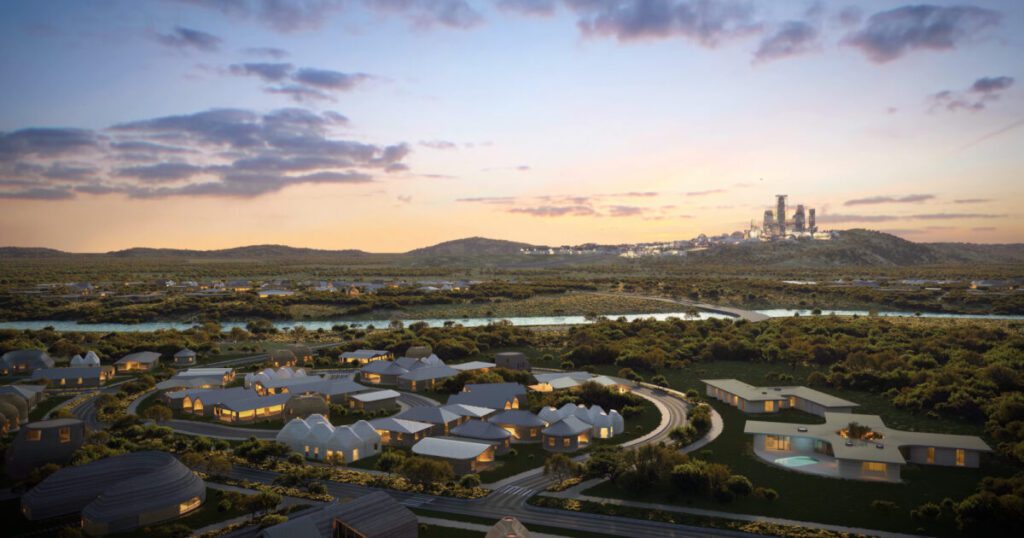
During SXSW, Leading Construction Technology Company ICON Announces A Multi-story 3D Printer, A New AI Tool for Architecture and Project Management, A Digital Catalog of Home Designs, and Advanced Low-carbon Concrete
AUSTIN, TX, March 12, 2024 – At a large event during SXSW® dubbed “Domus Ex Machina” ICON, the pioneer of advanced construction technologies and large-scale 3D printing, announced a new suite of products and technologies designed to further automate construction including a radical new robotic printer that enables multi-story construction, a new low-carbon building material, a digital catalog for residential architecture with more than 60 ready-to-build home designs, and an AI Architect™ for home design and construction. ICON believes that together these technologies make its construction technology platform a faster, more sustainable way to build high-quality housing affordably around the world.
“This is the moment we’ve really been working for these past six years,” said Jason Ballard, ICON Co-Founder and CEO. “When we launched the company and the first permitted 3D-printed house in 2018 during SXSW, we set out to both decrease the cost and increase the quality of building instead of choosing one or the other. We didn’t want to just be the best at 3D printing, we wanted to be the best at building, period. Now, I believe we can say that is a reality. I am so proud of the work ICON has done to get to where we are today– not only the promise, but the reality of technology, architecture and materials that will allow us to build better than anyone in the world.”
ICON’s new suite of robotics, software and materials include:
Phoenix™: ICON’s new multi-story robotic construction system introduces the capability of printing an entire building enclosure including foundations and roof structures. By increasing speed and size and decreasing setup time and the number of required operators, this advanced robotic system will reduce ICON printing costs by half. ICON is now taking orders for projects using Phoenix starting at $25/square foot for wall systems or $80/square foot including foundation and roof. This cost to build is lower than the most recent publicly available data for conventional construction of wall systems*. This wall system cost would represent a savings of up to $25,000 for the average American home versus conventional construction. The first engineering prototype of Phoenix has completed a 27-foot-tall architectural demonstration structure, now on display in Austin, TX.
CODEX™: ICON’s digital catalog of ready-to-print home architecture features more than 60 designs across five collections: Texas modern, fire resilient, storm resilient, affordable, and avant garde. The aim of CODEX is to make high-design and high-performance residential architecture available at all price points. CODEX allows builders, developers, and home buyers to build with ICON quickly and affordably using world-class architecture. ICON’s aim is for CODEX to be the most comprehensive digital catalog of buildable home designs in the world. It empowers ICON customers to select preferred designs as a starting point for their master planned communities and developments. ICON will continue to introduce new collections and will also partner with and compensate architects all over the world to feature their designs. Three of the CODEX collections available today were designed by BIG-Bjarke Ingels Group. Architects can submit their designs and developers can explore the collections and initiate projects with ICON today at https://codex.iconbuild.com.
CarbonX™: ICON’s CarbonX is a new low-carbon extrudable/printable concrete formula. When paired with ICON’s wall system and robotic construction methods, ICON’s CarbonX formula is the lowest carbon residential building system ready to be used at scale. A white paper co-authored with the MIT Concrete Sustainability Hub, “Reducing carbon emissions in the built environment: A case study in 3D-printed homes” (published March 12, 2024), features a case study of 3D-printed homes employing CarbonX. The life cycle assessment results of the white paper show that the embodied and operational impacts of 3D-printed homes are lower than stick-framed construction. ICON will be shipping CarbonX to the field in April 2024. ICON has also announced that it will make its material available to other projects and customers, not only its own 3D-printed projects. Future formulations of CarbonX are already in development to reduce carbon footprint even further and are expected to be announced in the coming year.
Vitruvius™: An AI system for designing and building homes. The ultimate goal of Vitruvius is to take human and project inputs and produce robust architecture, plans, permit-ready designs, budgets, and schedules. Launched today with an open beta, Vitruvius will help anyone design homes and generate floor plans, interior renders, and exterior renders in minutes based on their own desires, budgets, and feedback. By the end of this year, Vitruvius will progress all the way through schematic designs and in the following year ICON believes its AI architect will be able to produce full construction documents as well as permit-ready designs, budgets, and schedules. What truly makes Vitruvius unique is the combination of design and construction know-how. That knowledge is what allows Vitruvius to produce designs that can actually be built. Join the list to be the first to experience Vitruvius beta at vitruvius.ai.
Ballard continued, “In the future, I believe nearly all construction will be done by robots, and nearly all construction-related information will be processed and managed by AI systems. It is clear to me that this is the way to cut the cost and time of construction in half while making homes that are twice as good and more faithfully express the values and hopes of the people who live in them. We are going to need the same velocity of ambitious technological breakthroughs that we’ve experienced in these past few years, but we know where we are headed. Going forward, ICON is an AI and robotics company focused on transforming the way we build and accelerating what we believe is a very exciting future. Vitruvius will become the default method for ICON in designing custom homes. We intend to be selling and building Vitruvius-designed homes beginning this year.”
During the showcase event, Initiative 99™ winning designs were also revealed from phase I of the global architecture competition to reimagine affordable housing that could be built for $99,000 or less without sacrificing beauty, dignity, comfort, sustainability, or resiliency. More than 60 countries from all over the world were represented in the submissions with six winners and ten honorable mentions being awarded prize money from the $1M prize purse during the event and presented by Wells Fargo, lead supporter of the competition. The first, second, and third place designs in each category will each have their home designs featured as a collection in ICON’s CODEX.
Wells Fargo also announced on stage their foundation has committed $500,000 in grant funding to Mobile Loaves & Fishes, the Austin nonprofit that has been faithfully serving the area’s homeless community for more than 25 years, to help bring to life Initiative 99-designed homes and see multiple homes built at Community First! Village (CFV) to serve the underhoused community. Upon completion of Phase II of the global design competition, ICON and Mobile Loaves & Fishes will select one winning design for ICON to deliver multiple units within CFV’s expansion of their master planned development in Austin, TX.
“ICON’s innovative 3D-printed technology paired with these beautiful, imaginative Initiative 99 designs represent a model for the future of affordable housing. Wells Fargo is proud to help make these homes a reality,” said Darlene Goins, President of the Wells Fargo Foundation.
ICON and partner Liz Lambert also unveiled further plans to expand the new El Cosmico™ in Marfa, TX to include Initiative 99 winning designs where the existing bohemian campground is located. This adds to the newly designed and reimagined 60+ acre expansion of El Cosmico in far west Texas that will feature a hotel, hospitality amenities, and homes. The project breaks ground this year.
The latest announcements from ICON will provide the tools and technology to deliver more beautiful and resilient neighborhoods, communities and subdivisions enabled by the design freedom and new possibilities of 3D-printing.
“If you are a person who wants to own an ICON home, we want to hear from you so that we know what to design, where to build and what your hopes are for your own future,” Ballard said. “If you are a developer who needs support to deliver your project ahead of schedule and under budget and feel good about what you’ve created in the world, we want to build with you. If you are a builder who wants to take the most advanced construction tools in the world with you into the field, we want to work with you. If you are an architect, who wants to help us develop entirely new design languages and architectural vernaculars that align with your culture, values and imagination, we want to work together. We want to bring the entire industry together and equip everyone with the tools to properly build our future.”
ICON’s DOMUS EX MACHINA highlights can be viewed on ICON’s YouTube® channel. Visit www.iconbuild.com to get in touch and learn more.
*According to the National Association of Home Builders report released Feb 1, 2023.
About ICON
ICON is a construction technology company developing robotic and AI systems to lower the cost and increase the speed and quality of construction. For more information visit www.iconbuild.com or follow onX™, Instagram®, Facebook®, YouTube®, or Threads® (@ICON3DTech).
©2024 ICON Technology, Inc. All rights reserved.
Initiative 99 Winners Revealed
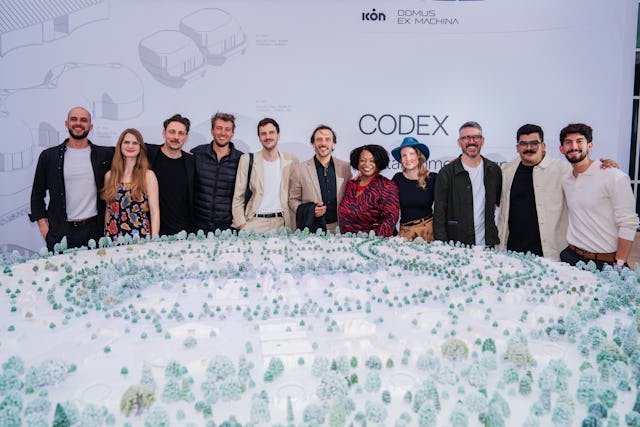
Global Architecture Competition to Reimagine Affordable Housing Will See Winning Designs Become Reality as Multiple Homes Will Be 3D Printed to Serve the Under-housed
Six winners of Initiative 99 phase one and Wells Fargo Foundation president Darlene Goins (Photo by Roger Ho)
During ICON’s official SXSW 2024 event yesterday, DOMUS EX MACHINA, ICON announced the phase I winners of Initiative 99, the global architecture competition to reimagine affordable housing that can be built for $99,000 or less. Joining ICON’s Melodie Yashar, VP of Building Design and Performance on stage to present the winners was Darlene Goins, president of the Wells Fargo Foundation who was the lead sponsor of the competition. As part of the announcement, Goins announced that the Wells Fargo Foundation is committing $500,000 in grant funding to Austin-based nonprofit Mobile Loaves & Fishes to help bring to life Initiative 99-designed homes and see multiple homes built at Community First! Village to serve the underhoused community.
Upon completion of Phase II of the competition, ICON and Mobile Loaves & Fishes will select one winning design for ICON to deliver multiple units within Community First! Village’s expansion of their growing development.
More than 60 countries from all over the world were represented in the submissions with six winners and ten honorable mentions being awarded prize money from the $1M prize purse during the event and presented by Wells Fargo, lead supporter of the competition.
The first, second, and third place designs in each category will each have their home designs featured in a collection in ICON’s CODEX, a new digital catalog of ready-to-print home architecture that allows builders, developers, and home buyers to build with ICON quickly and affordably using world-class architecture.
Full list of winners and those receiving honorable mentions from Phase 1 of Initiative 99:
Winners in the Student Category
1st prize: Casa Fami (Spain)2nd prize: Juan Felipe Molano (Colombia)3rd prize: Victoria Roznowski (Germany)
Winners in the Open Category
1st prize: MTspace Studio (New Zealand)2nd prize: For Everyday Life (United Kingdom)3rd prize: Beta Realities (Germany)
Honorable Mentions in the Student Category
Fusco-Ayala (USA)Canavati+Carneiro+Kazmaz (USA)Henry Aldridge (UK)LGK (USA)NEXT-LIVING (Spain)
Honorable Mentions in the Open Category
Willowprint (Germany)Sameep Padora and Associates (India)Guerin Glass Architects (USA)JK3D (USA)ConCave (various locations)
Look behind-the-scenes at a short documentary about the winners and their stories behind their inspiration for their winning designs.
[embedded content]
To learn more about the winning designs, visitwww.Initiative99.com.
Passive House Canada CEO highlights next steps as the climate changes

Over the next 25 to 35 years almost every building in Canada will need to be improved to make them “safe and inhabitable” as the climate changes. The “real money” spent over that period will be in deep energy retrofits, said Chris Ballard, CEO of Passive House Canada (PHC), who told a seminar audience recently […]
This Brooklyn Multifamily Community Is Sustainable—and Affordable

Photos courtesy Chris Cooper March 5, 2024 Passive House mixed-use development Chestnut Commons provides affordable housing to formerly homeless and low-income residents within a self-sustaining neighborhood. By: Sam Lubell While Passive House standards have proved effective for single-family homes, their impact can be even more pronounced in multifamily developments, providing increased health, comfort, and affordability […]